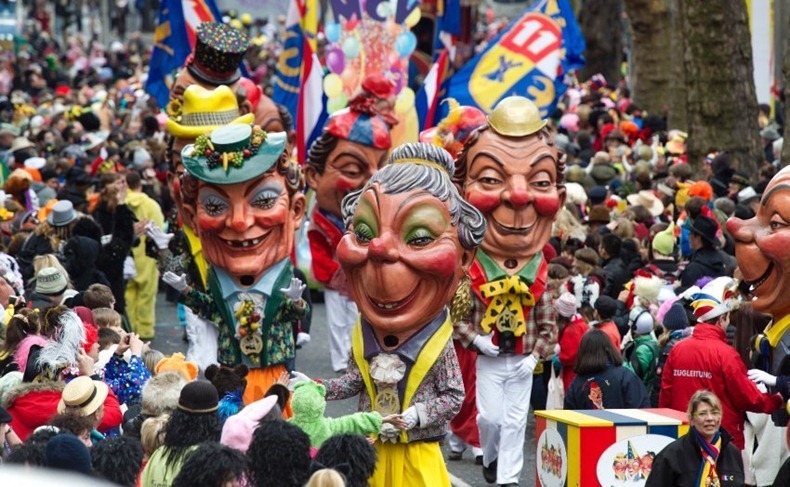Cologne Cathedral
The Cologne Cathedral - or Kölner Dom in German - is Cologne's landmark and considered one of Germany's most popular touristic destinations. Its construction began in 1248, yet only fully ended in 1880, making it the tallest building in the world for ten years until 1890. With a height of 157 m, the Cologne Cathedral is the third tallest church in the world and considered a UNESCO world heritage site in Europe. When sightseeing Cologne, it should defenitly be your first stop. You can find the opening hours here.
Cologne Old Town
Cologne´s Old Town is the historic heart of the city. It dates back almost two millennia, with roots from Ancient Rom. It is known for its colorful houses and the proximity to the Rhine.
Flora Botanical Garden and city forest of Cologne
Cologne is also known for its green spaces.
The botanic garden, for example, is home to about 12,000 plant species from all over the world on approximately 5.5 hectares of land. It features many different garden styles, such as English landscape, Italian Renaissance and French Baroque gardens. It is worth a visit during every season and at every time of day, and the best thing is, admission is free of charge.
The city forest or urban forest of Cologne - Stadtwald in German - is an extremely extensive green area with a size of 205 hectares. Through its dense area featuring numerous different amenities, such as a game reserve, ponds, water channels, sports facilities, playgrounds, and an extensive network of pathways, the park guarantees having a perfectly suited spot for everyone.
Rheinauhafen
The Rheinauhafen is a former port facility in Cologne's old town south, which is now an urban regeneration project used as a residential, office, service and commercial area. It is home to numerous companies of the creative industry; among the larger companies and law firms are Freshfields Bruckhaus Deringer, CMS Hasche Sigle, Electronic Arts and Microsoft; among the cultural organisations are the Kap am Südkai, German Sport & Olympia Museum and Imhoff-Schokoladenmuseum.
Veedelkultur
Experience Cologne´s identity through its unique "Veedelkultur". The “Veedelkultur” is a term describing Cologne´s local culture and traditions. It can be found in its neighborhoods, such as "Ehrenfeld", "Nippes" or the Belgian Quarter.
Museums
Cologne also has a variety of museums that are worth visiting. Examples are:
- The Museum Ludwig for art of the 20th and 21st centuries. It is considered as one of the most important art museums in Europe, with the third largest Picasso collection in the world, one of the most important collections on German expressionism and over 70,000 works in total. It is located immediately southeast of Cologne Cathedral and the main train station.
- The Romano-Germanic Museum for ancient archaeological from prehistory to the early Middle Ages. Highlights are the largest collection of Roman glass in the world as well as outstanding collections of Roman and early medieval jewellery.
- The Wallraf–Richartz Museum for fine art from the medieval period to the early twentieth century. It is the oldest museum of city and contains picture from Cologne from the Cologne School of Painting.
NS Documentation Centre
The NS Documentation Centre of the City of Cologne is the largest regional memorial site in all of Germany for the victims of the Nazis. The building was the headquarters of the Cologne Gestapo (secret police) between December 1935 and March 1945. Ironically, the building remained largely untouched by the ravages of the war and was transformed it to a museum in 1979.
Brewery culture and Kölsch
As a german city, Cologne is also know for its brewery culture. It even has its own beer known as "Kölsch", which is a must try while visiting in Cologne (and yes, the tiny glasses in which it is served are the real deal).
12 Romanesque churches
Cologne is not only known for its cathedral, but also for its Romanesque churches. Indeed, Cologne is home to twelve Romanesque churches from the Middle Ages, which are set in a semi-circle around the city centre. These structures are without parallel anywhere else in the world and were built between 1150 and 1250. Examples of these monuments of cultural history include Groß St. Martin (Great St. Martin's Church) in the Old Town, Saint Pantaleon in the southern Old Town and St. Kunibert in the northern part of the city.











